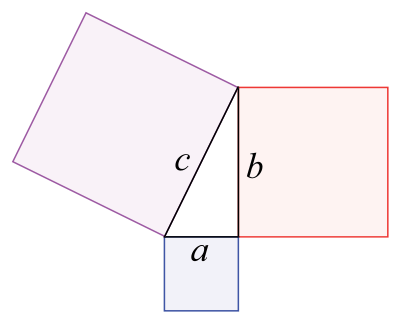Wikijunior:More on Mathematics/Pythagorean theorem
< Wikijunior:More on Mathematics
The Pythagorean theorem is the theory that the sum of the square areas of sides A and B add up to the hypotenuse, or C's square area. It's formula is described as:
There are many reasons to prove this correct; you may find them on Wikipedia. However, there is more than just this equation, called the Pythagorean equation.
Pythagorean triples
Pythagorean triples are three sets of positive whole numbers that can make a perfect triangle.
Take the image on the right. Pretend (A) is 3 and (B) is 4. What is (C)? (Hint: C is the hypotenuse; the longest side on the picture.) Use the Pythagorean equation to figure it out! (Click on the reference link to see the answer!)[1]
Now, let's try the Pythagorean equation backwards! Now, (B) is 12 and (C) is 13. Please figure out (A).[2]
References and answers
- ↑ Please highlight to your right: (C) is 5.
- ↑ Please highlight to your right: (A) is 5. AGAIN?! Oh man, this is cheap! (Actually, no it's not.)